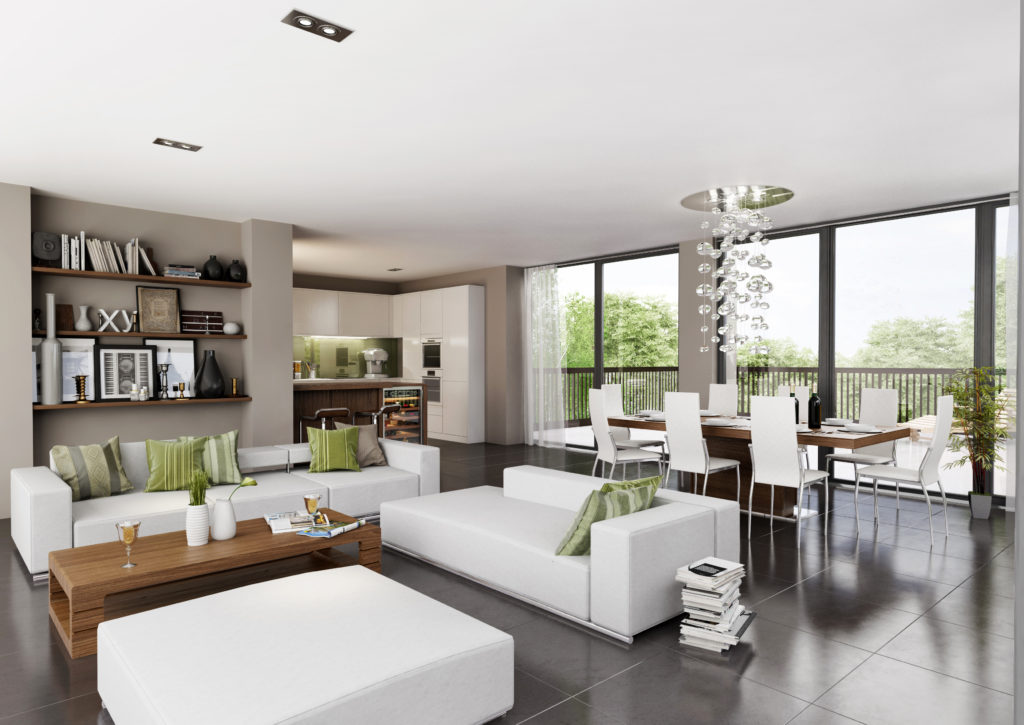Computer generated images are a crucial tool for housebuilders. In this latest Insight, Queensberry Properties’ marketing director, Hazel Davies, explains how the appliance of technology can help sell a lifestyle as well as a development, enabling buyers to imagine what a future home will look like before construction begins
“Before the internet revolutionised house hunting, property marketing was often surprisingly basic. Estate agent schedules generally involved black and white A4 printouts, perhaps with a 5” by 3” external photograph glued to the front. New housing developments tended to be marketed in an equally limited way; brochures often featured a curious mix of generic photography and pictures taken at previous developments. Buyers would have little idea what a new estate would eventually look like, let alone how each property would be presented once it was constructed.
Digitally mastered
“In today’s visual age, computer generated images (CGIs) provide essential marketing for new-build developments. Queensberry Properties has commissioned CGIs for most of our current and forthcoming projects, showcasing everything from a building’s height and scale to its materials and finishes. Sites can be viewed at angles a real-world camera might struggle to capture, without being affected by weather or traffic.
“CGIs benefit prospective purchasers and developers in equal measure. The main image for our new Waverley Square development in the heart of Edinburgh shows how sympathetically its architecture blends into this historic setting. The incorporation of bicycles subtly draws attention to the pedestrianised central plaza, while restaurant canopies highlight the café-culture lifestyle on offer. At a glance, the CGI shows a six-storey building with large windows and stylish rainscreen cladding. On closer inspection, it depicts a scene far more appealing than the current reality – a busy construction site full of cranes and workmen in hard hats!
“Without CGIs, housebuilders may have to rely on indicative images and generic product/lifestyle shots for marketing brochures and webpage content. And that’s not good enough in today’s mature marketplace. Unless a company is stamping out identikit properties at every active development, buyers expect to see exactly what the biggest purchase of their lives will provide. From streetscapes to specific rooms, the cost of commissioning CGIs is hugely outweighed by the value they add to marketing materials. And nor is this the only way in which digital images can assist builders to market properties…
Seeing the bigger picture
“While CGIs play a crucial role in new-build marketing, related digital technology is developing apace and now extends to demonstrating the internals of each off-plan home. It’s now not uncommon for a potential purchaser visiting a sales and marketing suite to be invited to don a virtual reality (VR) headset and ‘walk’ around individual units from the comfort of an armchair. This interactive CGI environment can help people pick a favoured plot, based on everything from garden orientation to internal space and layout. House-hunters don’t even need to visit the development if they have VR technology at home – ideal for people relocating to a new region, or anyone experiencing mobility issues.
“Looking forward, VR headsets could also become useful for personalising a reserved plot. Virtual CGI walk-throughs could help to identify things to change or upgrade, from adding sockets to removing non-load bearing walls. This would be much easier than using a 2D floorplan, since buyers may struggle to imagine how an empty space might be used. This value-added VR service could even reduce the risk of off-plan sales falling through, as buyers would be more emotionally invested in a home they’d helped to design. Indeed, VRmight do for customisation what CGIs are already doing for development marketing – making everything seem more real and attainable.”

